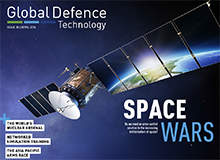
Security concerns for the Sochi Winter Olympics in Russia were even higher than those for London in 2012. We review what security measures were put in place and whether they can be considered a success and ask whether the event will help bring long-term stability and tourism to the region.
We also examine the nuclear arsenal owned by key nations around the world, take a look at the booming biometrics market and review technological innovation in soldier kit that came out of urgent operational requirements during the conflicts in Iraq and Afghanistan.
Moreover, we investigate emerging threats against military satellites and the most effective measures to protect such vital networks, take a look at new breakthroughs in networked simulation training for pilots and explore recent shifts of power and the drives behind increased naval procurement activity in the Asia Pacific region.
Click here to read the latest issue.
In this issue
A Triumph over Terror?
Despite a background of terrorist attacks and safety concerns in the run-up to the opening ceremony, the Sochi Winter Olympics passed without incidents. Berenice Baker reviews the security measures that were put in place.
Click here to read the full article.
Power Shift: The World’s Nuclear Arsenal
Significant progress has been made in nuclear disarmament, with the US/Russia New START treaty achieving its milestone goals. But as not all nuclear weapons states are signatories to the nuclear non-proliferation treaty and North Korea continues testing, Berenice Baker asks, is the world a safer place?
Click here to read the full article.
Booming Biometrics
Recent conflicts and peacekeeping missions have driven the adoption of biometric systems by armed forces. Berenice Baker takes a look at the evolution of sophisticated biometric technology.
Click here to read the full article.
Evolution of the British Soldier
The British Army was dangerously ill-equipped for Iraq and Afghanistan, but a number of urgent operational requirements have achieved significant equipment upgrades. Grant Turnbull reviews how a decade of war has transformed the British soldier’s kit.
Click here to read the full article.
Space Wars
With today’s militaries relying heavily on satellites, Grant Turnbull asks how the US is addressing growing concerns over space debris and anti-satellite weapons.
Click here to read the full article.
The Digital Battlefield
Soldiers, sailors and airmen could soon be rehearsing realistic battles online across a network of simulators. Grant Turnbull explores the latest technologies from Northrop Grumman and BAE Systems that are making this virtual dream a reality.
Click here to read the full article.
Sea Change
Territorial disputes in the South and East China Seas and an impetus to defend strategic access points have led to increased investment in advanced vessels. Berenice Baker examines the main drivers behind naval policy in the region.
Click here to read the full article.
Super Carriers
Aircraft carriers are a key asset to any naval force, having proven their worth as floating air bases since World War II. We take a look at the world’s ten biggest carriers by displacement.
Click here to read the full article.
Next issue preview
In February, the British Army was drafted in to stem the tide of flooding that left parts of the UK inaccessible. We take a look at the role of the armed forces in helping out national emergencies, and the skills and equipment they bring on board that aren’t otherwise available. We also explore a new generation of smart weapons, review Turkey’s ambitious domestic equipment manufacturing projects and investigate the controversy surrounding Switzerland’s plans to buy 22 Gripen fighter jets from Sweden.
Moreover, we find out how Europe’s two revolutionary unmanned combat aircraft, the Taranis and the nEURon, compare in terms of capability, catch up with the latest developments in NATO’s Ballistic Missile Defence roll-out and examine the future of BAE Systems’ Scottish shipyards.
Digital magazine FAQ
Global Defence Technology is available on the iPad and as a free desktop version*. You can download our app or read the latest issue here.
View the archive of back issues.
Sign up for your subscription here.
*Browser compatibility: The desktop version can be viewed in the latest two version of Chrome, Firefox and Safari, as well as in Internet Explorer 9 and 10. Some features may not be compatible with older browser versions.




